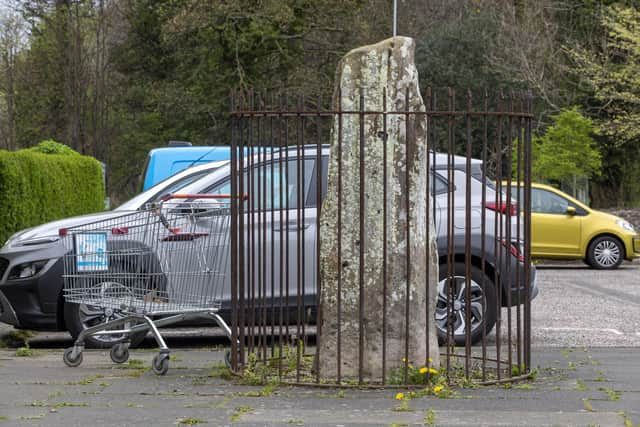Edinburgh ancient monument: One of the world's oldest stone monument can be found in a Scottish council estate
Originally built in the Neolithic period the stone was erected around 4,000 years ago - predating the Great Pyramid of Djoser which was the first in Egypt..
But the single megalith now sits next to a block of flats in a cul-de-sac on Ravenswood Avenue, Edinburgh.
Advertisement
Hide AdAdvertisement
Hide AdThe forgotten grey sandstone is nearly 7ft tall and is caged in by railings to protect it from vandals.


Illustrations from the 19th century show the megalith standing alone in fields near Edinburgh.
It remained untouched until it was moved in the early 1800s to facilitate road widening in the area.
By the 1960s it was moved again as the new housing estate began to take shape, and it currently stands around 100 metres north of where it was originally.
Some say it was put in place to commemorate an ancient battle but a lot remains unknown about the badly weathered relic.
It's one of several megaliths found dotted around the area - but the only one found on a housing estate.
The standing stone is a scheduled monument.
A spokesman for Historic Environment Scotland said: "The monument is of national importance as an icon of prehistoric ritual, albeit in a modern urban setting.
"Although the stone no longer has any archaeological potential, it is a monument with cultural significance, capable of speaking to a modern urban population, and worthy of legal protection in its present setting."
Comments
Want to join the conversation? Please or to comment on this article.